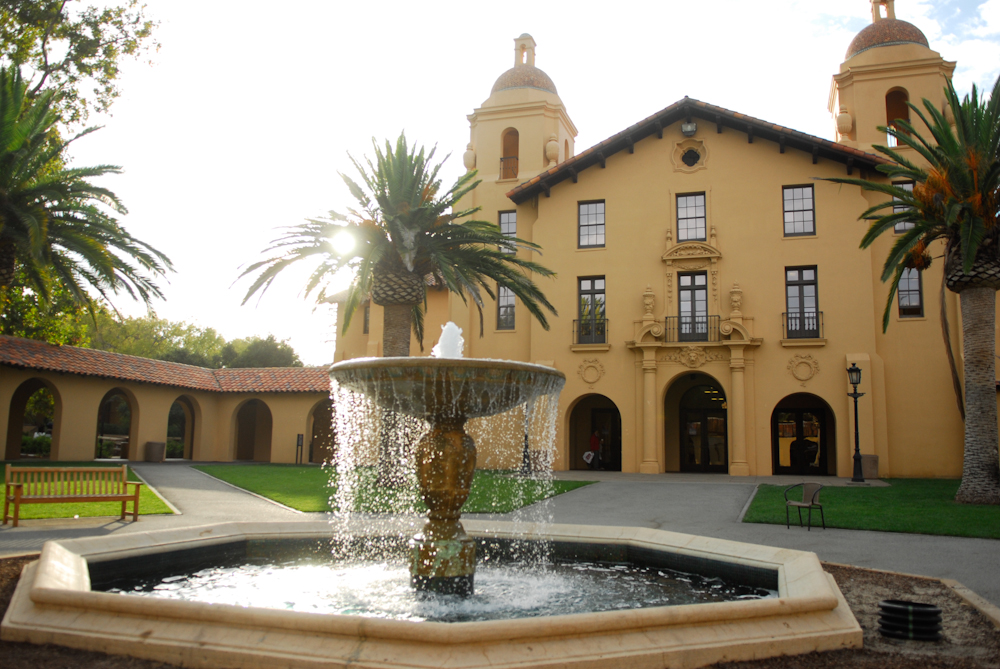Student government leaders say they have been having productive meetings with University administrators, advocating for increased student input on spring quarter plans. Stanford currently plans to invite juniors and seniors back to campus this spring, though the decision is subject to change based on public health conditions.
The University is committed to working with the Associated Students of Stanford University (ASSU) to integrate student perspectives into its decision-making process for spring quarter, according to Tuesday’s email from Provost Persis Drell and Vice Provost of Student Affairs Susie Brubaker-Cole. The commitment follows criticism of Stanford’s last-minute cancellation of its winter quarter plans, with some student representatives saying that the University consistently ignored their voices and concerns.
ASSU President Vianna Vo ’21 said that student representatives had multiple productive meetings last week with Vice Provost for Student Affairs Susie Brubaker-Cole, Dean of Students Mona Hicks and their colleagues.
Vo said that Student Affairs was very receptive to the ASSU’s suggestions, agreeing to extend the leave of absence deadline. She added that while the ASSU is grateful for the extension, the decision did not eliminate the “stress that was already inflicted on students.” Vo said that she hopes that student input can be more proactively integrated in the future to avoid the emotional and financial burdens that the University’s decisions may inflict on students.
In the email, Stanford committed to updating students on spring plans the week of March 1. Vo said the ASSU will encourage the University to consider this date as a deadline for its final decision, though they recognize that factors such as a marked decline in ICU capacity or an extension of stay at home orders at the county level may warrant a change after the deadline.
ASSU vice president Chris Middleton ’16 J.D. ’21 said he was optimistic about the University’s willingness to heed students’ concerns after administrators seemed responsive to students’ feedback to the ASSU’s “Winter Quarter Concerns” survey, released in the aftermath of the cancellation. Middleton thanked students for sharing their testimonies and said they were influential in extending the leave of absence deadline.
“I have a really deep gratitude for the people who took the time when they were frustrated and hurt to nevertheless make things a little bit easier for other students,” Middleton said. He added that going forward, he hopes that the ASSU and the University will collaborate to review the decision-making process and ensure that student concerns are proactively addressed.
ASSU executive chief of staff Jianna So ’22 said that even after COVID-19, she would like to see the University institutionalize community input from students, faculty and service workers in its decision making. “Student input is one way to start that, and part of our student input is to include people beyond us as well,” she said.
Brian Wu ’24 praised the University’s commitment to integrating ASSU input, but said he hoped that because student government is made up of mostly upperclassmen, there would also be direct outreach to frosh. Wu, who is a member of Frosh Council, said that “one of the main priorities for this quarter going onwards for the rest of the year is to, as much as possible, be able to help bring more student input to the administration.”
Some students were not as convinced, hesitant to believe Stanford’s promise to incorporate more student voices into decision-making. “I think that one thing that I have picked up over the last four years on campus is that the University will always say that they’re taking into account student input, but it is at the very least dubious, and sometimes blatantly obvious that they are not,” Henri Stern ’21 said.
Briar Conger ’21 echoed a similar sentiment, saying that the University often relies on input from one to two people on committees to represent a diverse range of student perspectives.
Nevertheless, Middleton remains optimistic.
“We can’t predict how COVID will change over the coming months, but if the worst thing happens, and students aren’t able to come back, I think that we’ll be able to have much smoother communication around that in terms of when that decision is made,” Middleton said.
He advised students to keep multiple options open when planning for spring quarter and to actively monitor state and county public health guidelines to gauge the likelihood of altered plans.
He added that even amid the pandemic, he empathizes with upperclassmen who hope to be on campus. “I understand having been an alum now what that last quarter of senior spring means to people,” he said. “It’s a really special time on campus, but ultimately, I want people to be safe. And if it isn’t safe for people to be on campus, they shouldn’t come.”
University spokesperson E.J. Miranda declined to offer additional information about the University’s plans to engage students, including activist groups like Stanford Solidarity Network and Basic Needs Stanford, in its decision-making.
Contact Kaushikee Nayudu at knayudu ‘at’ stanford.edu and Carolyn Stein at castein ‘at’ stanford.edu.
